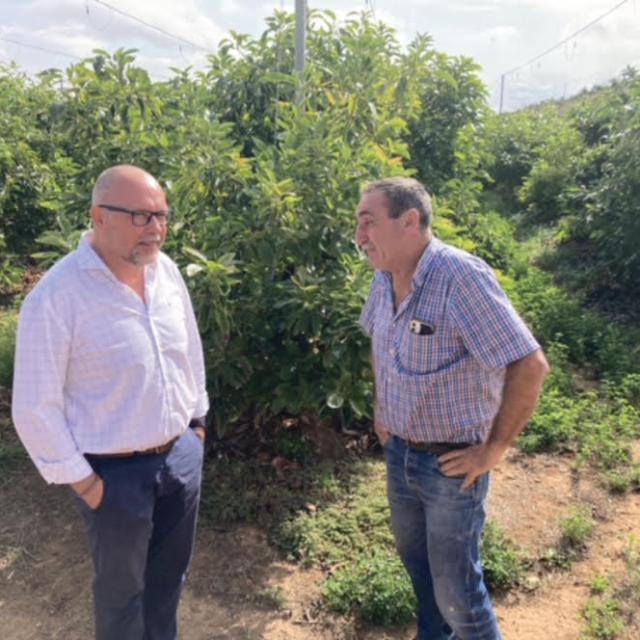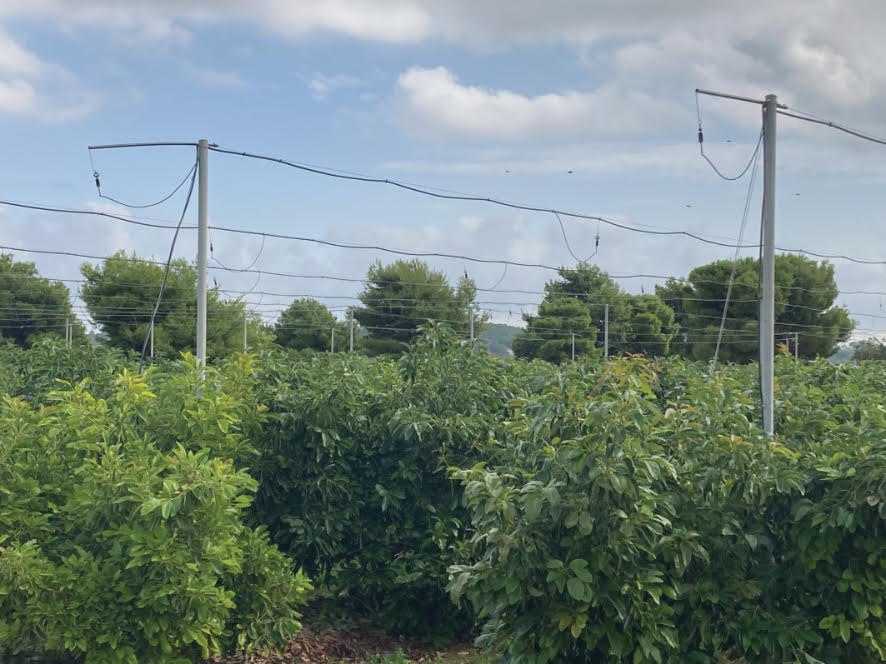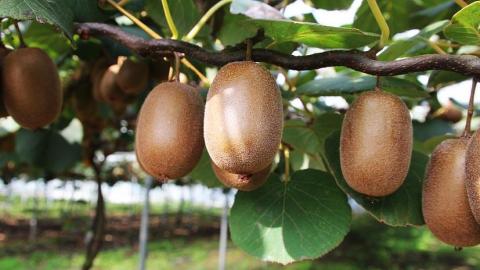I travelled to Henrique Torrente’s farm at Torrent in the autonomous community of Valencia in the company of José Navarro, technical director at NaandanJain Spain. Originally specialising in the production of mandarins, just like the majority of the farmers in the region, three years ago the Spanish farmer decided to diversify into high-value crops such as avocados and kiwi fruit.

Mr. Torrente is one of the region’s pioneers in the growing of avocados: he has 8 hectares of avocados and 11 hectares of citrus fruits. And a few kilometres away, on a second farm, he produces kiwi fruits.
Growing avocado trees is a very delicate operation because it originates from tropical or subtropical regions, particularly Central America and Mexico.
A number of Mexican varieties have been selected for their hardiness and their capacity to resist moderate frosts, allowing the crops to be established in Mediterranean regions such as Corsica or the South of France. A small amount is grown in these regions. The European avocado is smaller, smoother skinned and very tasty!
Mr. Torrente told us: “There are two main problems: the frost and the extreme heat in the months of July and August in the south of Spain”.
There are only 4 to 5 hectares of frost per year in the region. The mild climate of the Valencia region makes it ideal for avocado production, but even one single day of frost is enough to ruin a harvest.
Furthermore, the region experiences intense heat waves in the summer, when the wind blows in from the west. If that should occur when the flowers reach maturity then it will be very harmful because they could wilt and that would have a severe impact on the harvest.
A micro-sprinkler system for cooling and frost protection
And it is to avoid these two risks that our farmer decided to instal a micro-sprinkler system, which acts both as a frost protection system in the winter and a cooling system in the summer.

The micro-sprinklers are positioned high up, well above the trees (the trees are no more than 1 metre in height). The trees are spaced at 4 metres apart and there is a spacing of 5 metres between each row of trees. “This spacing of the trees is intentional because there must be sufficient light to stimulate growth and enough spacing to allow the cooling process to be effective”, explained Mr. Torrente.
And José Navarro adds: “the size of the droplets produced by the micro-sprinklers is very important ; they should be optimised to achieve maximum irrigation uniformity”.
As far as the frost protection is concerned, when it arrives, i.e. on 4 or 5 days per year, all the micro-sprinklers are switched on. “For the cooling, we often only irrigate certain sections of the farm,” explained Mr. Torrente.
A traditional drip irrigation system has been added to the micro-sprinklers for irrigation and the injection of nutrients.
The drip irrigation system is laid on the soil and complements the micro-sprinkler system.
I asked Mr. Torrente about the avocado’s crop water requirements. He replied: “the trees have a peak water requirement in July-August of around 50 litres per tree per day. I only irrigate 3 or 4 days per week in October and only two or three days per week in December-January”.
Two years ago, our farmer installed Root Sense sensors on the farm. The sensors are installed at three different depths and our farmer takes the readings 8 times in the course of the year.
He retrieves the data on his mobile phone, which in an instant indicates the crop’s water and fertiliser requirements. He can trigger the irrigation cycles from his mobile phone; however, nothing can replace the human factor. He says, “the sensors are a very useful tool but I cross-check all the information and in the end I am the one who makes the final decision”.
The water is supplied from a borehole made available to an irrigation cooperative
Water is not a problem in the Valencia region. There are irrigation cooperatives that are allowed to draw water from a shared borehole. Mr. Torrente draws water from two boreholes on his farm. “It’s a good system because the farmers always have water available”, explained Mr. Torrente.
The water is then filtered: the farm has two filters (Amiad and STF Filters), one for the micro-sprinkling system and the other for the drip irrigation.
The farm is also equipped with a Progrès Agronomic 2500 controller and the irrigation is divided up into three sectors.
Little fruit this season
“There was very little fruit this year”, explained Mr. Torrente, “because the spring was cool and rainy. The rain compromised the insect pollination”.
The average yield of an avocado tree is 18 to 20 kilos per tree, and Mr. Torrente only managed to harvest 10 kilos per tree. Another explanation is that the farm has only recently been established, the trees being planted only three years ago.
Furthermore, the farmers have to face up to fluctuating prices and increased energy costs. It happens very often at the time of planting that they do not know what the selling price of the fruit is going to be. That is why they diversified and they now grow three types of crops.

